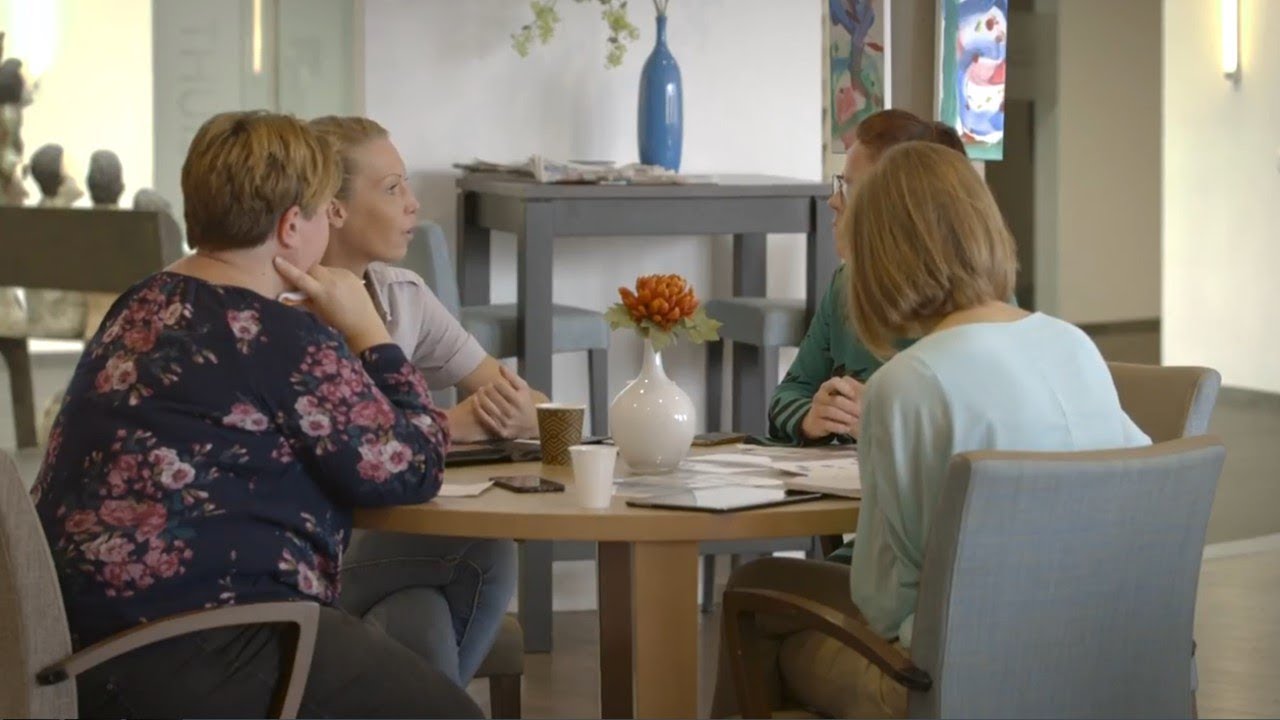Learning together to provide better care for older people in Elsloo

"Good cooperation can prevent both gaps and redundancies in care.”
Learning together to discover how to improve care for older people in and around the town of Elsloo, Limburg – that’s what Anneke van Dijk, a postdoctoral researcher in the department of Family Medicine, is doing with Zorgnetwerk Elsloo. “This local care network covers a region where the number of people aged 75 and over has doubled in twenty years. As a result, the demand for health care is rapidly increasing. Older people also have increasingly complex care needs as they have multiple conditions”, explains Anneke van Dijk. To provide proper health care and social support, it’s crucial that the parties involved work closely together. “The question isn’t whether they should work together, but how. Good cooperation can prevent both gaps and redundancies in care.”
Involved research line
The establishment of the local care network in 2013 was an important step in the right direction. A large number of parties work together in this interdisciplinary network, including general practitioners, allied health professionals, pharmacies, home care services, nursing homes and social work services. The municipality of Stein, in which Elsloo is located, also plays a role as it provides services under the Social Support Act.
Anneke van Dijk began research on further implementing cooperation within this network in 2015, funded by the Netherlands Organisation for Health Research and Development. After completing her study, she stayed on as coordinator of the network. “The network is a kind of living lab. My current research focuses on promoting the collaboration among all these different stakeholders. Everyone says that interprofessional collaboration can be improved and that it’s necessary to work with individual care plans for patients. In practice, however, communication between stakeholders can be quite complex. In order for them to work together, they have to know each other well and know what each party has to offer.”
Action research
Action research is a useful tool for investigating how to promote interprofessional collaboration. “It’s about learning while doing. You determine which steps to take together. Rather than providing solutions, the researcher participates in the process.” All partners in the care network are included in this process, as well as citizens, a housing association and a number of social welfare organisations. Two goals were set, explains Anneke van Dijk. In addition to getting to know each other better, the stakeholders work towards a common approach in which they make use of each other’s strengths. Moreover, two specific themes were selected: Fall Prevention and Future-Proof Living.
“In our first meeting, we divided the participants into two groups and assigned a theme to each group. Each of the stakeholders had to interview two people in the group they represent within the network about the theme they’d been assigned. In our next meeting, we shared and analysed the results. This gave us a clear picture of the situation of older people in Elsloo.”
Co-creation
Anneke van Dijk also used a tool called Value Pursuit in her research. “This tool is about asking questions in groups, such as, ‘What is our common goal? What are the expectations? How can I contribute and what can I take from this?’ In this case, the answer was, ‘Learn from each other and provide concrete help for older people’. The next question was, ‘What are we already doing and what more can we do by making use of each other’s strengths?’ For the theme of Fall Prevention, this approach resulted in a concrete proposal to set up a location where people can go for information about fall prevention or practical help with adjusting their wheeled walker, for example. “This process of developing solutions together is called co-creation”, says Anneke van Dijk.
LIME
In the Elsloo project, Anneke van Dijk applies co-creation tools she learnt within LIME. LIME, short for “Limburg Meet”, is an extensive development programme aimed at measuring care more efficiently and effectively. Anneke van Dijk works as a coach in this programme, encouraging, facilitating and supporting other researchers in using methods in the co-creation process. Within LIME, she and Anita Stevens of Zuyd University of Applied Sciences developed a “co-creation impact compass” to help researchers select and apply these kinds of methods. The compass forms the basis of a PhD training course at CAPHRI.
The co-creation process definitely adds value to the Elsloo project. “You can tell from the pleasant communication between the stakeholders. Older people will undoubtedly have noticed this, although it’s difficult to measure. As for myself, I really enjoy seeing how enthusiastically people participate and how committed they are. We’re taking steps together and are truly learning together.”
Text: Karin Burhenne
Translation: Emdash
For more information about LIME, please visit:
www.limeconnect.nl
